PLAY room curator Jeroen van Paassen believes a deeper connection with the public will enliven the art scene.
I strongly believe that art, if it is provocative or controversial, if it dares us, it will see public engagement. Today, the arts aren’t that popular with the public at large. However, graffiti artists like Banksy are widely admired. Why? Because he raises important questions about society. And that’s what I try to do with every exhibition I organise.

Opening speech during the very first opening of the gallery, 4 January 2019. Photo: PLAY room
Tell us what led to your journey in art?
My journey started in 1993. I was reading the newspaper and saw an article about a retrospective of a Mexican artist. After reading that article I had to go and visit that museum. I had never been to a museum or gallery before, but now I had to. It was a retrospective of Frida Kahlo in the Netherlands and that visit changed my life. I decide then and there to dedicate me life to the arts.
First I tried as an artist, but it turned out I didn’t have the talent for it. But in 1999, I joined an art committee of an office in Zaandam, the Netherlands. Until 2019 I was collecting art for that office building. In 2009, I set up my own foundation to organise large-scale art events in temporary locations. Since then I have organised exhibitions mainly in the Netherlands, Germany and Denmark, with around 65 participating artists. I have also done shows in France, Azerbaijan, North Macedonia and Finland with a smaller selection of artists.
This journey culminated on January 4, 2019, with the opening of my own gallery PLAY room in Zaandam, eight kilometres north of Amsterdam..

Installation by Chrystl Rijkeboer (the Netherlands) during the Global Village exhibition in Zaandam, June 2016. Photo: PLAY room
How do you describe yourself in the context of challenging people’s perspectives via your work?
For me art is about position determination: “Where are we?” In my view, art is essential in understanding the social structures of a society. And today’s society is very complex, with globalisation, consumerism, internet, climate change and so on. We need art to see the big picture, to make us aware of its challenges.
Since the very start of my art practice this position determination has been a focus. When I was collecting art for the office building, I would ask myself questions like “Why are we in this office and not in the next? Who are our clients? What is our branch about?” I created a collection that was relevant to these questions. The art I put up belonged there. For example, we purchased a work by Martijn Sandberg – an installation made with coins that formed the sentence: “We are only in it for the money.” Provocative, right? It received many reactions like most of the artworks I collected. While discussing an artwork, people were indirectly discussing where they are. This created a growing engagement with the art and the people at the office wanted to see every new piece that arrived in the building. And when asked about the work and the working space, it turned out that people enjoyed the space very much, more than the work itself, and that was an important reason for them to stay there.
I strongly believe that art, if it is provocative or controversial, if it dares us, it will see public engagement. Today, the arts aren’t that popular with the public at large. However, graffiti artists like Banksy are widely admired. Why? Because he raises important questions about society. And that’s what I try to do with every exhibition I organise.

Poster of the April 2019 exhibition. Jeroen as a typical dressed Dutch lady. Photo: Jasmine de Vries (the Netherlands)
What does your role as director of PLAY room involve? How does a multi-hyphenate like you balance the contradicting elements of your work?
I see my role as the bridge between the audience and the artists. Therefore, I have to create a space where the audience loves to come and the artists want to exhibit. To attract audience I organise a programme on the side along with the exhibition. It could be a DJ, live music or even a fire-dancer on the roof of the gallery, something that gets people’s attention. Of course, the programme has to correspond with the theme of the exhibition. Once they are in, they see the exhibition and I make sure that there are always artworks that surprise them, like big installations or videos. So, it is immediately clear that we are not the average commercial gallery. We address important issues like climate change, women rights and so on.
So far the audience is coming back, getting more and more enthusiast about our selection of art. And artists love it that they are allowed to experiment and raise important questions, which they often can’t do at more commercial galleries.
I always ask the artists to create some things for the gift shop and so far the shop is very important in making ends meet. It also has collectibles made by famous artists like Ai Weiwei’s sunflower seeds.
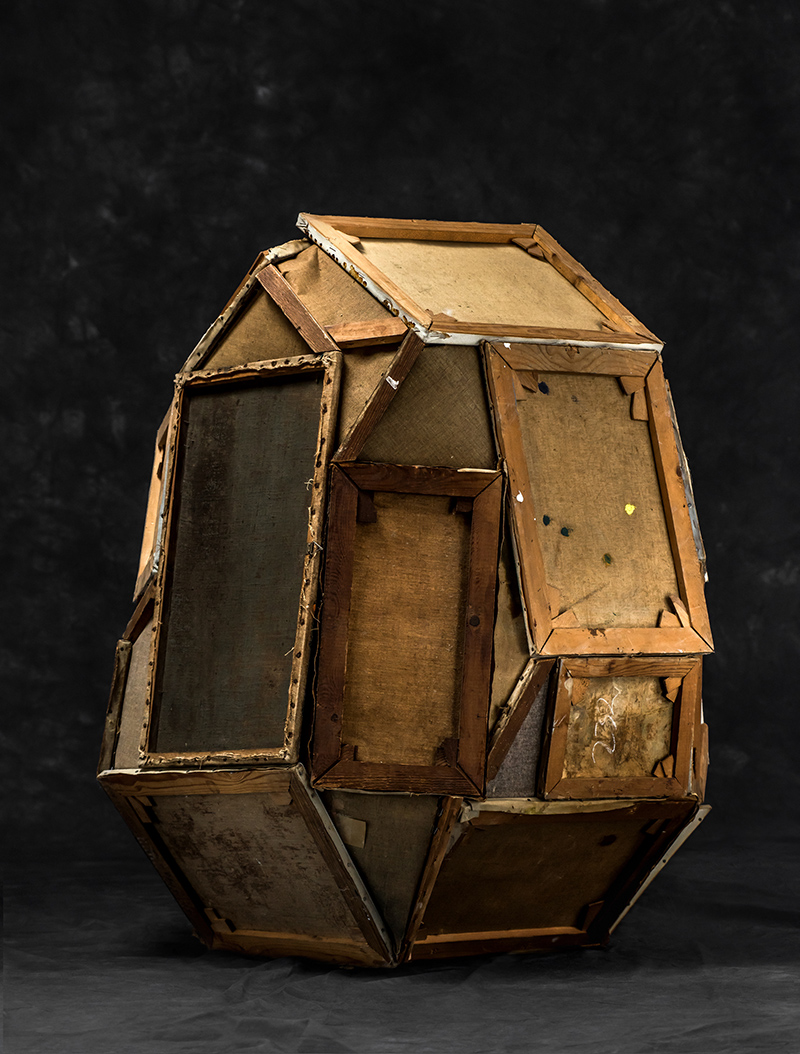
Bram Ellens (the Netherlands) – Orphan. 80 x 120 cm Installation made of the art collection of a deceased collector. Photo: Bram Ellens
Take us through your frameworks of reference. What do you look for when you review artists’ work?
Basically, selection is a selfish activity. I have to like it. I need to have the desire to see the real thing. If I’m not passionate about what I show, I can’t get it across to the audience. For example, when I was organising an exhibition about women’s rights I contacted Zoë Simon, a performance artist from London. I had worked with her before in Germany and I knew she addresses women rights issues in her work. Also, she does her performances with lots of bravado and humour. For me that makes her performances very strong, when you can address hot topics without preaching but with wit. She surprises and captivates you. In PLAY room she occupied the gallery, taped herself to the window in order to claim gallery space for female artists and the audience loved it. The gallery is located in the main shopping street and across the street people were stopping at the side-walk, looking at the gallery and wondering what’s going on. I loved it!
Let us talk about your long-term vision. Would it be safe to say that PLAY room is the first step towards manifesting this vision?
No, PLAY room and my foundation are both important. After 10 years of putting up shows in temporary locations, I needed a permanent place. So, I see the future as a combination of the two.
The vision is to build PLAY room into a centre where visual art is central, but also poetry and live music are included. With the foundation, I want to organise a large-scale art event in Zaandam every two years. Also, I want to organise a large-scale art event every two years in summer outside the Netherlands or even outside Europe.
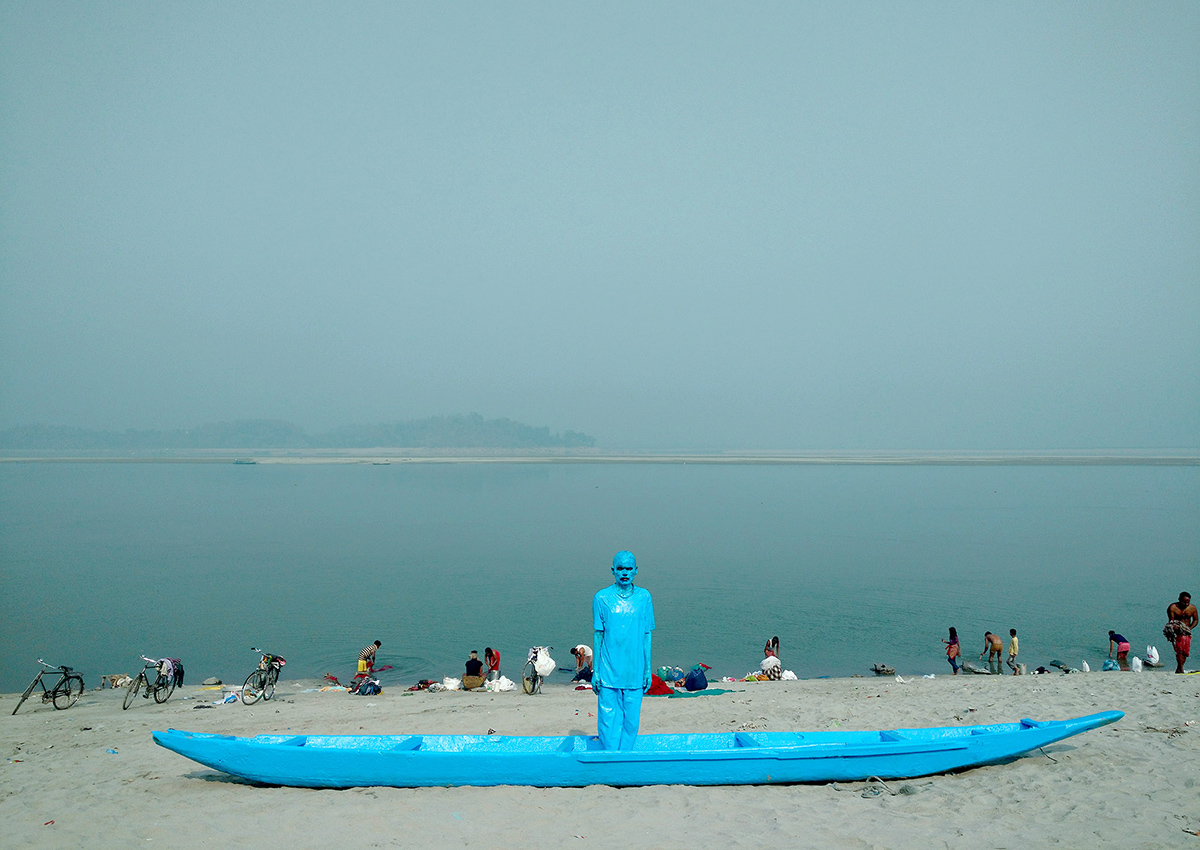
Devadeep Gupta (India) – Man on Boat photo-series. Series about climate-refugees; former fishermen perform with a boat at the shore of the Brahmaputra, where their houses used to be. Photo: Devadeep Gupta
Let’s get imaginative. What kind of a service or product would elevate the art industry?
Today it is very important for the art world to reconnect with the public. Instead of waiting for the audience to come to me, I should go to the audience. Therefore, I travelled with my foundation to cities, where they normally don’t have big international art exhibitions, like Landshut in Germany, or Brøndy Strand in Denmark. That is also the reason why PLAY room is located in Zaandam and not in Amsterdam. In Amsterdam there are hundreds of galleries, in Zaandam just a few.
Meeting each other is very important – artists meeting artists, and also artists meeting the public. It is so meaningful when a person can ask an artist explain his or her work. Remove the barriers between art and the public. Live music is a good way to attract people who normally won’t go to art events.
It is good to realise that the first aim as an artist or as a curator is to connect with the viewer, to communicate, to touch and move somebody. So inspire first.
However, in all honesty, I haven’t found the golden formula yet. I’m still learning. But the results so far have taught me that the solution lies somewhere in that direction.
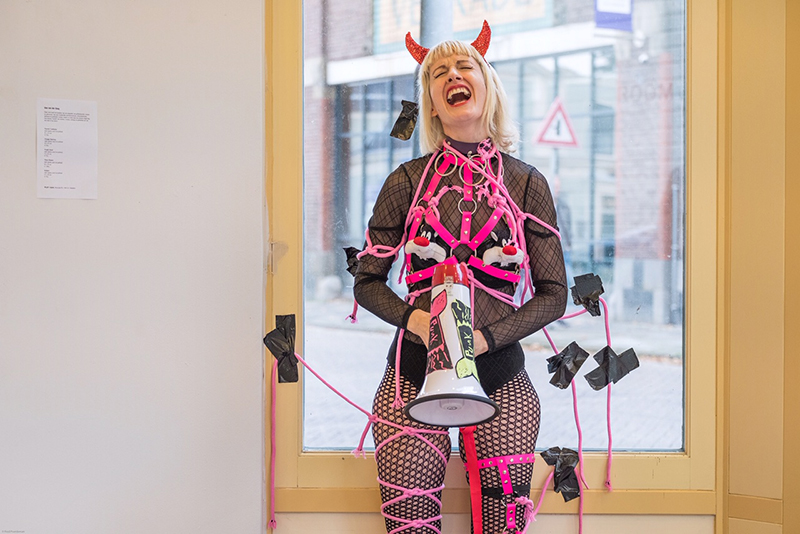
Zoë Simon tapes herself unto the gallery-window in order to claim gallery space for female artists, 20 October 2019. Photo: Fred Peerdeman
Which shows, performances and experiences have shaped your own creative process? Who are your maestros?
My maestros aren’t only visual artists, but people who think outside the box. For example pop icon Grace Jones. I love how she combines visual and performance art with her disco songs. Or curator Jean-Hubert Martin. He dared to place a medieval painting next to a contemporary one or an indigenous artwork next to a western one, and by doing so he created a new narrative, a new way of looking at art history. Or philosopher Alain de Botton. He writes in a way that everybody can understand. I would recommend his book Status Anxiety. So inspirering! You can always wake me up for Andy Warhol. I just can’t get enough of his work.
And how they have shaped my own creative process? Well, they gave me the courage to follow my own vision. To quote Dutch rockstar and action painter Herman Brood, “It is better to have bad taste than no taste at all.” These maestros gave me an insight into how to connect with the public.
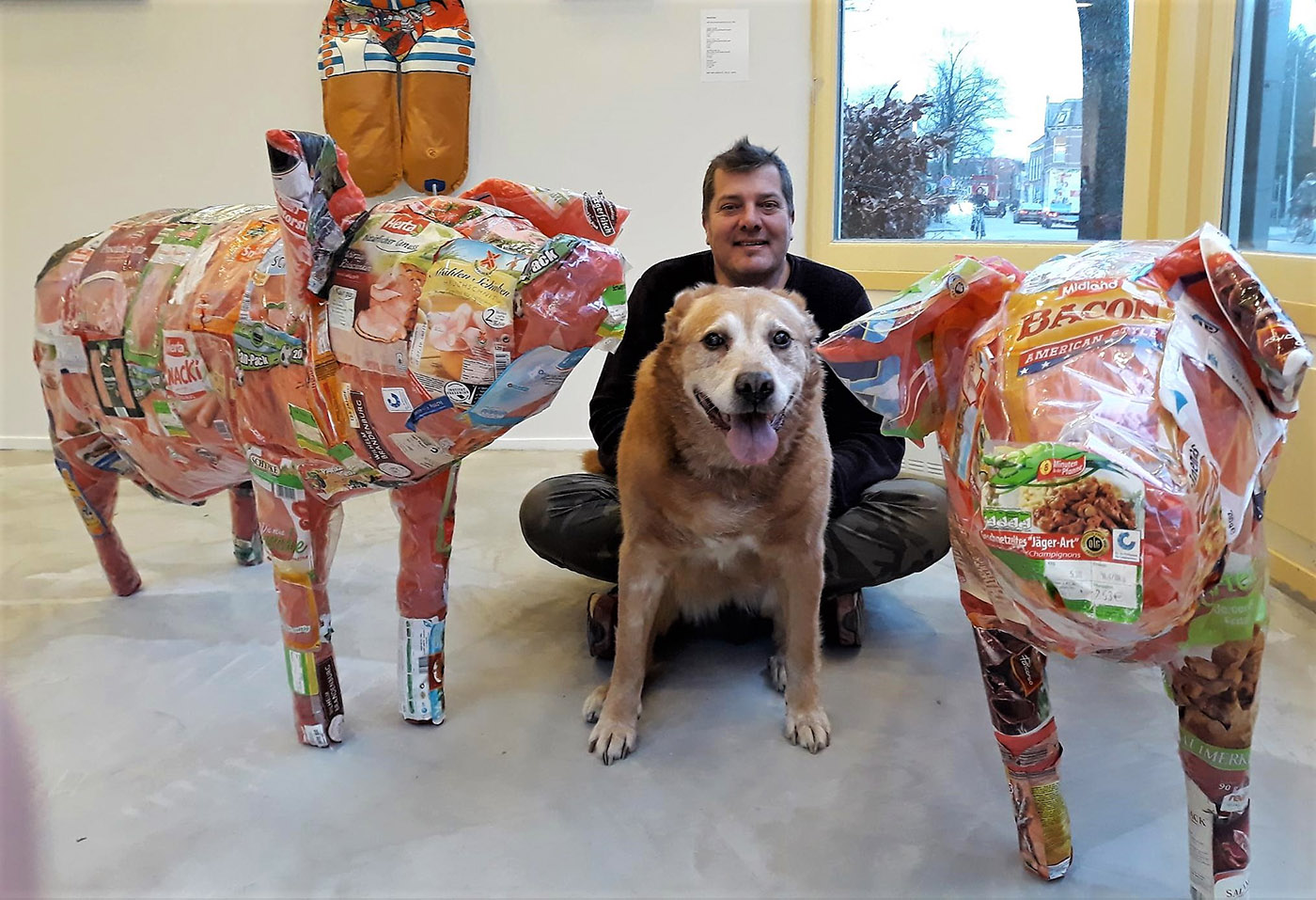
Jeroen and his dog in the gallery between Mari Terauchi’s (Japan) ‘Where Do You Come From?’ objects. Pigs made of supermarket-meat packagings. Photo: PLAY room
Tell us about your own personal evolution vis-a-vis the work you do.
In the art world it is popular to say, “You are only as good as your last artwork/ exhibition.” That may or may not be true. However, you can only evolve by taking risks. Get out of your comfort zone and, therefore, open yourself to the possiblility of failure. Look at Picasso. He made thousands of artworks, but only a few masterpieces. Trial and error is the only way forward. So, don’t be afraid to fail. There is always the next exhibition to do it right.
What are you working on now?
At this moment I’m concentrating on the PLAY room-exhibitions. This January we celebrated our first anniversary and in that exhibition a part of my private collection will also be on display, and next to that a big object from Bram Ellens called Orphan. It is made with artworks from deceased collectors.
In February we opened our most controversial exhibition until now. The theme is individual vs totalitarianism, with artworks from the Netherlands, Germany, Hong Kong, Iraq and Zimbabwe.
With the foundation we are now in contact with a location in the Far East. If everything goes well, we could organise an international exhibition in 2021. I’m very excited about this. For six years I had been trying to get to here and looks like it is finally happening. My fingers are crossed!
Before you go – you might like to browse the Asian Curator curatorial archives . Contemporary art curators and international gallerists define their curatorial policies and share stories and insights about the inner runnings of the contemporary art world.








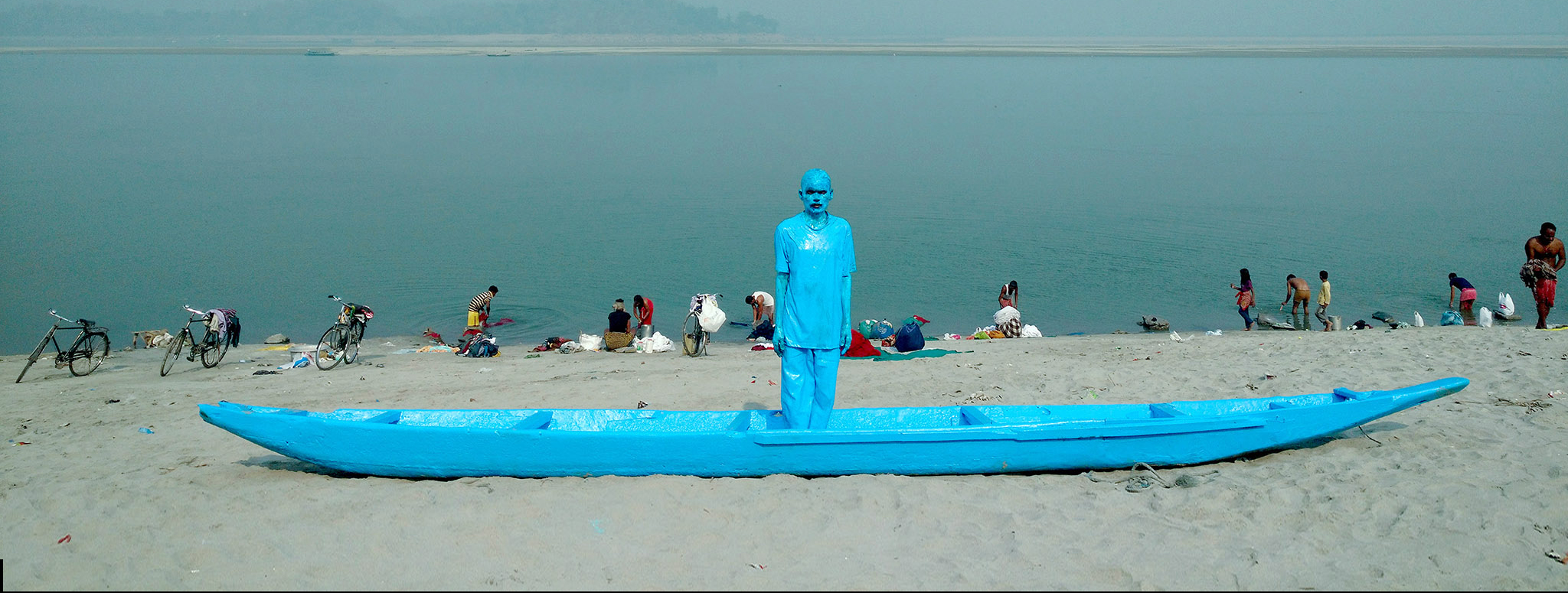



Add Comment